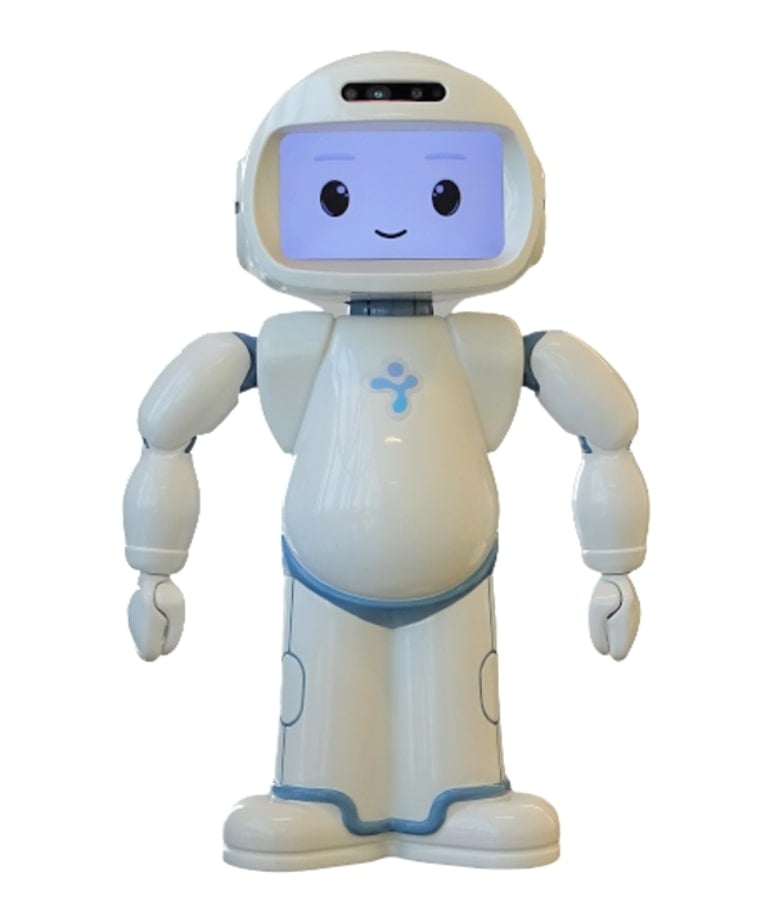Summary: QT, a newly developed social robot, is successful at helping children with learning disabilities stay focused on their school work. Researchers say the robot makes positive contributions to the classroom and learning environment for those with learning disabilities.
Source: University of Waterloo
Engineering researchers at the University of Waterloo are successfully using a robot to help keep children with learning disabilities focused on their work.
This was one of the key results in a new study that also found both the youngsters and their instructors valued the positive classroom contributions made by the robot.
“There is definitely a great potential for using robots in the public education system,” said Dr. Kerstin Dautenhahn, a professor of electrical and computer engineering. “Overall, the findings imply that the robot has a positive effect on students.”
Dautenhahn has been working on robotics in the context of disability for many years and incorporates principles of equity, inclusion and diversity in research projects.
Students with learning disabilities may benefit from additional learning support, such as one-on-one instruction and the use of smartphones and tablets.
Educators have in recent years explored the use of social robots to help students learn, but most often, their research has focused on children with Autism Spectrum Disorder. As a result, little work has been done on the use of socially assistive robots for students with learning disabilities.
Along with two other Waterloo engineering researchers and three experts from the Learning Disabilities Society in Vancouver, Dautenhahn decided to change this, conducting a series of tests with a small humanoid robot called QT.
Dautenhahn, the Canada 150 Research Chair in Intelligent Robotics, said the robot’s ability to perform gestures using its head and hands, accompanied by its speech and facial features, makes it very suitable for use with children with learning disabilities.

Building on promising earlier research, the researchers divided 16 students with learning disabilities into two groups. In one group, students worked one-on-one with an instructor only. In the other group, the students worked one-on-one with an instructor and a QT robot. In the latter group, the instructor used a tablet to direct the robot, which then autonomously performed various activities using its speech and gestures.
While the instructor controlled the sessions, the robot took over at certain times, triggered by the instructor, to lead the student.
Besides introducing the session, the robot set goals and provided self-regulating strategies, if necessary. If the learning process was getting off-track, the robot used strategies such as games, riddles, jokes, breathing exercises and physical movements to redirect the student back to the task.
Students who worked with the robot, Dautenhahn said, “were generally more engaged with their tasks and could complete their tasks at a higher rate compared” to the students who weren’t assisted by a robot. Further studies using the robot are planned.
A paper on the study, User Evaluation of Social Robots as a Tool in One-to-one Instructional Settings for Students with Learning Disabilities, was recently presented at the International Conference on Social Robotics in Florence, Italy.
About this social robotics and learning research news
Author: Ryon Jones
Source: University of Waterloo
Contact: Ryon Jones – University of Waterloo
Image: The image is credited to University of Waterloo
Original Research: The findings were presented at the International Conference on Social Robotics






